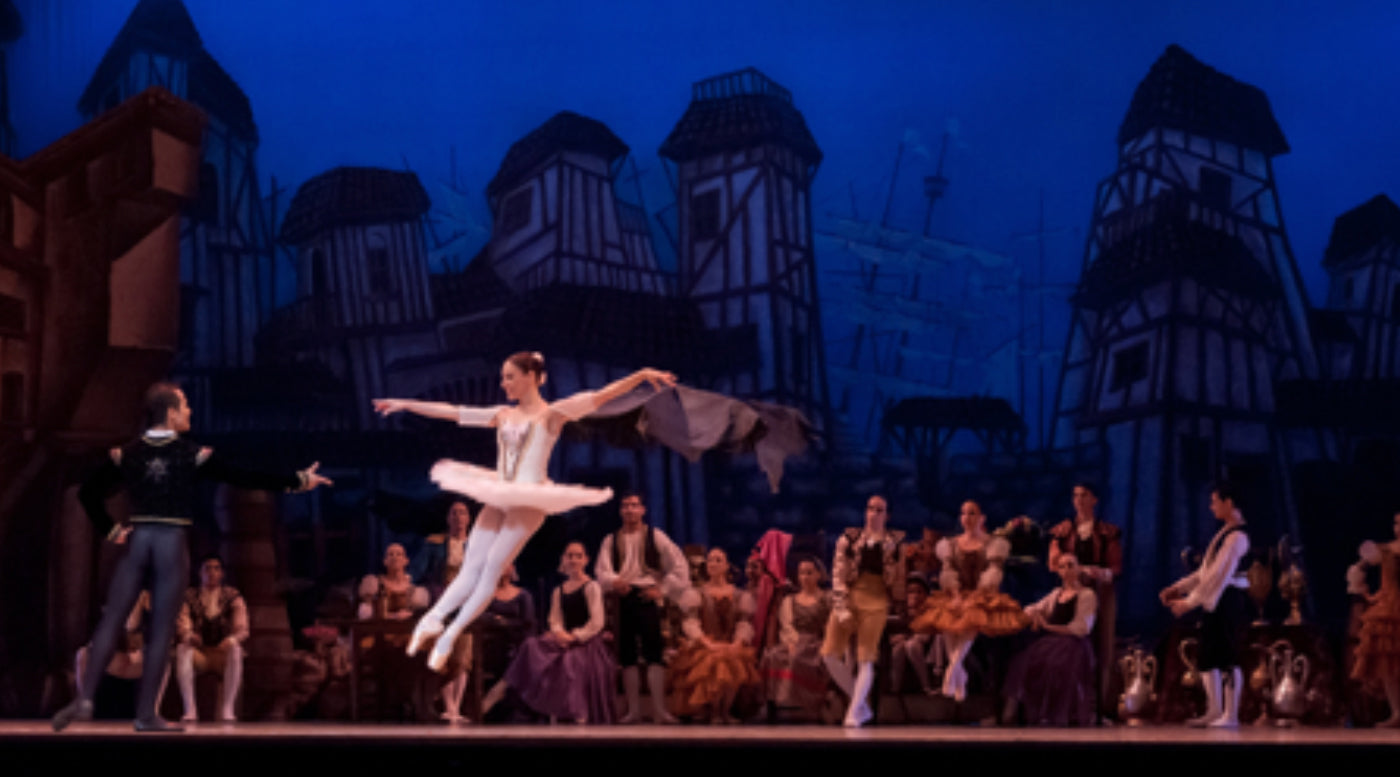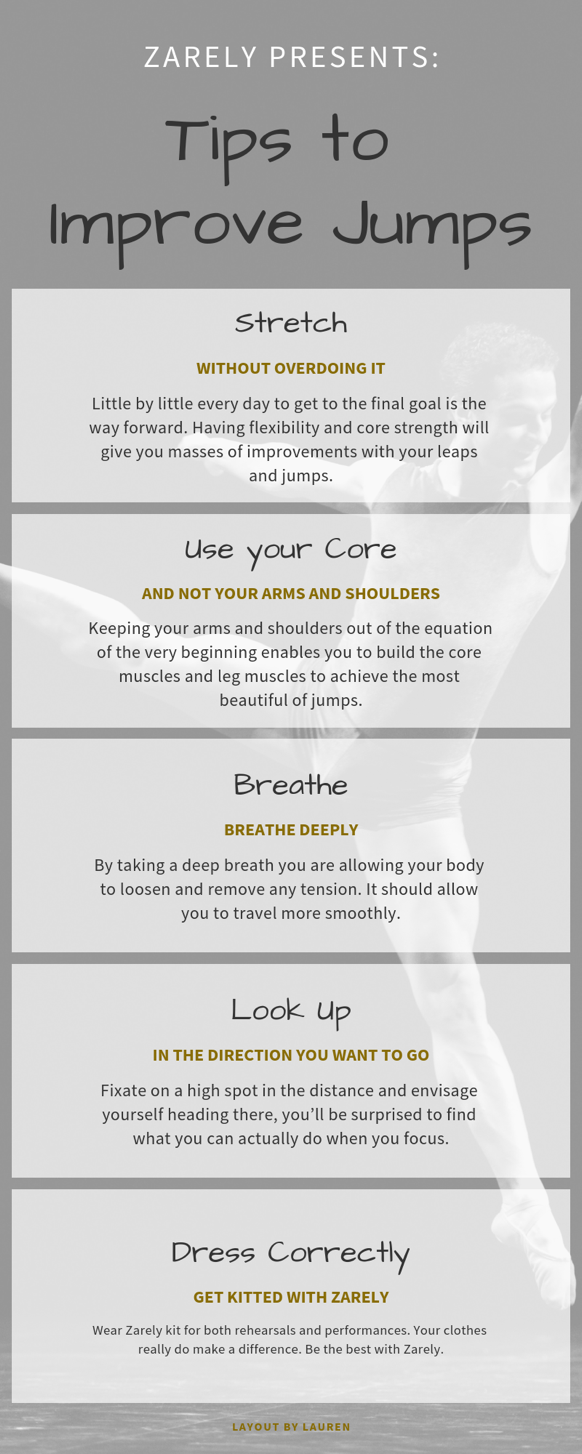Your Cart is Empty
Intrigued about the different types of ballet jumps that vary across the discipline? Of course, you are. There are so many that it’s enough to intrigue even the non-dancers among us, after all, how exactly are they doing these amazing ballet jumps? Well, we’re here to give you a little tell-all and ultimately bring you theoretically and literally leaps and bounds ahead of your class about the different types of jumps and the ballet jumps terms that you might just need to know!
As we know, ballet is built of movement groups. Once the basic forms of jumps have been learnt, it’s time to move on, progress and bound your way forward into exploring all of the different ways in which we jump.
There are five types of ballet jumps which we will explore now. They are the following:
Before getting on to the big jumps in ballet and those amazing jumps that soar way into the sky, we wanted to touch base on the small ballet jumps. Those little jumps that piece together to make a beautiful routine. Small ballet jumps, known as petit allegro, are used both in training to assist in the building of musicality, coordination and fancy, quick footwork. On stage, they are used to create variation and character dances. Without further ado, let’s explore some of those petit allégros:
A jump straight up from fifth position with both legs and arches extended. Starting from demi-plié to gain the momentum, the dancer springs upwards into the air. It’s essential to avoid brushing the legs together.
The movement of the fish, sounds delicate right? Or maybe a little fishy…? Well, a temps de poisson is where a dancer bends their back at the height of a jump, with the feet placed together and the pointes cross to form a style of fish tail. Think of those fish you get out of a Christmas cracker – sort of like that! You then land on one leg in a demi-plié with the opposite leg stretched back towards the air.
The much-loved by many changement. The jump where the feet so quickly changes positions. It can give the impression of such fancy footwork without too much effort, per say! Starting in fifth position, you jump directly up and down, getting the push from the plié. In the air, you quickly change feet to land back in fifth, with the opposite foot in front.
This movement is exactly the same as a temps de poisson, however, if you have your legs in attitude in the air, it is known as a temps de l’ange. All of the same rules apply.
The jumping to escape movement. Starting in fifth position, the dancer jumps to finish in a demi-plié in either second position or fifth position. Both feet travel in equal distance from the original centre starting point.
Another well-loved fairly easy ballet jump is the pas de chat, or the step of the cat. Delicate, springy and bouncy it is where the dancer must, in essence, embrace the cat. Don’t just think like the cat, be the cat! Starting in fifth position the front leg passes through retire whilst the other leg pushes off the floor and is also raised and passes through retire. The first leg is the one that lands primarily with the second leg following to close into fifth position.

Well, we’ve explored some of ballets small jumps. The ones that can be categorised perhaps as easy. Or easy for a dancer! However, now it’s time to bound forward into the difficult ballet jumps. Those tricky moves that cause problems for even the best trained amongst us. The ballet jumps that cause problems and can be difficult to execute no matter how skilled and fit you are. Sometimes, they just pose difficulties. But, that’s okay – it shows we’re human. It’s important not to beat yourself up about it and for every fall, there are 100 more beautiful jumps waiting for you. So get back up, dust yourself off and if you need a little reassurance or a little guidance on how to execute some of the difficult moves, Zarely is here to help:
The Grand Jeté is notoriously one of the most difficult ballet jumps. It’s an extremely demanding jump that requires a dancer to continuously stretch to maintain their flexibility. The problem with a grand jeté is that it only takes a couple of weeks out of practise to find yourself literally leaps and bounds away from being how you were before. A grand jeté is so problematic and stressful for some dancers due to the fact it’s acquired by gracefully propelling yourself into the air whilst appearing to do the splits whilst hovering above the ground for a moment. It’s not enough to almost reach the splits, we have to see it in the air for it to be the spectacular jump that we know it as.
A tour jeté is a jeté but manipulated by added a twist. It changes a grand jeté into a slightly smaller leap that reserves the dancers’ orientation. Involving a turn, a brish-through of the leg and then another turn which meets a fouetté. The dancer has to land with the trailing leg in arabesque. Sound confusing? It’s supposed to! There’s a reason it’s so difficult to execute, but if you nail it, it can be the difference between a clap and a standing ovation. They look absolutely spectacular when executed right.
A cabriole can be achieved as a jump, although typically it involves travelling so can also qualify as a leap. However, after a plié, the extended leg is thrust up and out, followed by the supported leg. They beat together, to send the working leg even higher and the dancers’ body follows. The landing happens on the supporting leg. A lot of dancers have concerns about the cabriole, especially asking “does it hurt when you beat your feet together in a cabriole?”. Well, in a cabriole, you do not beat your feet together – you beat your thighs. We recommend starting to learn a cabriole at the barre – preferably a sturdy one where you can push down on if necessary. To achieve a cabriole you must keep lifting and extending through your spine and abdominal muscles. It’s essential to keep your shoulder blades pulled down, just like in an arabesque.
These examples of advanced jumps are the types you see in classical ballet.

We use improve your jumps as opposed to perfecting, because after all, we can strive for perfection but there’s always improvement. Strive for improvement. Strive for consistency. Try not to get caught up on practise makes perfect. Practise makes improvement. So, here’s how you can make your jumps better and some simple exercises to help you, day by day!
Comments will be approved before showing up.